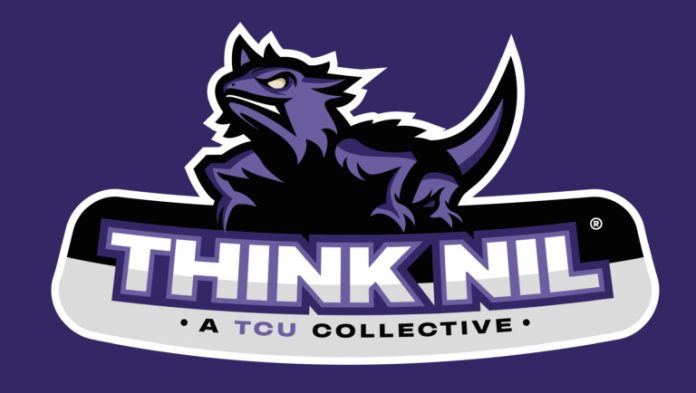Lawmakers in Texas, Arkansas and elsewhere are working to remove barriers between college athletes trying to cash in on their fame and the schools for which they play as administrators discover the benefits of moving athlete compensation activities in-house.
The moves could pave the way for schools and their fundraising arms to be directly involved in securing and paying for their athletes’ name, image and likeness endorsement deals while also shielding athletic departments from NCAA enforcement.
“The universities want to be more involved in the NIL process and some of the current NCAA rules don’t allow them to do that,” said Mit Winter, a sports business attorney based in Kansas City. “And so the state laws are just affirmatively saying that schools in these states are allowed to do certain things, despite what the NCAA rules may say.”
Arkansas was out front in this latest leg of the NIL arms race that started in 2021 when the NCAA lifted its ban on athletes being paid for endorsements, sponsorships and appearances. Gov. Sarah Huckabee Sanders signed an amended bill into law April 14. A similar bill in Oklahoma is awaiting Gov. Kevin Stitt’s signature and a Texas bill is likely to pass the state House this week.
Lawmakers in Colorado introduced a bill that says institutions can “identify, create, solicit, facilitate and otherwise enable” NIL opportunities for their athletes.
“And then they’re also affirmatively stating that certain entities can enter into NIL deals with athletes,” Winter said. “A lot of them say 501(c)(3) entities in the state, but what they’re really referring to is athletic fundraising foundations that are affiliated with universities.”
The 12th Man Foundation is a private organization that raises money to fund scholarships, programs and facilities for Texas A&M athletics. The 12th Man+ Fund is a newly created division within the foundation that operates like a collective, which have become pervasive as the primary source of NIL compensation for college athletes.
The NCAA sent out a memo to its Division I member schools soon after 12th Man+ was launched that said “entities acting on behalf of the institution” cannot pay athletes for NIL. Texas A&M athletic director Ross Bjork, in a recent interview, said the school is confident it is compliant.
NCAA rules permit schools and their employees — such as coaches — to promote collectives and encourage donations. If passed, the Texas bill could make NCAA scrutiny moot and protect schools in the state from some of the association’s NIL guidelines.
Having an athletic foundation involved in NIL activities in many ways makes sense. Collectives are essentially independent fund-raising operations, too. So why not tap an established organization that already has an open line to donors, relationships with athletes and alignment with athletic department goals?
“If the collectives can’t work with the schools, almost accidentally they’re competing with one another for the sponsorship dollars and brand relationships, which I don’t think is to anyone’s benefit,” said Dan Lust, a sports law attorney and professor at New York Law School.
At Arkansas, officials looked to remedy that situation last August.
“When (NIL) first started, it was like, wow, why would you have something that’s so important and not have the folks that everybody trusts in these positions involved? So it didn’t make sense,” said Marvin Caston, a former Arkansas football player and compliance officer.
He now heads OneArkansas NIL, a limited liability company owned by the Razorback Foundation.
“We are a separate and distinct legal entity from the Razorback Foundation,” said Caston, who left the Razorback Foundation after 13 years to lead the collective. “We do not compensate our student-athletes with any money raised by the Razorback Foundation for Razorback athletics.”
Bjork said the next step for Texas A&M is creating at least one and maybe two new positions in his department that will be solely devoted to working with athletes on NIL opportunities.
That’s another trend.
Minnesota announced in March that former Gophers football player Jeremiah Carter would be shifting from compliance director to a new role as senior associate athletic director for NIL policy and risk management. Duke recently named Rachel Baker, a former Nike executive, its first basketball general manager, overseeing NIL opportunities for athletes.
College sports leaders have been pushing for a federal law to create a uniform standard for NIL that the NCAA cannot. That effort picked up steam in 2019, when California served notice that statehouses were the next battleground over amateur athletics and compensation with its first-in-the-nation NIL law.
California is at it again, with a measure seeking to require college revenue-sharing with athletes. Tim Buckley, the NCAA’s senior vice president for external affairs, called that “the wrong solution at the wrong time for college athletics.”
“Another state law at this time will exacerbate the growing problem of different states imposing different rules,’ he said.
In a statement to AP, the NCAA also said it has no plans to change its enforcement and investigatory actions because of the latest wave of state NIL laws.
“Independent reviews have found many NIL deals can be exploitive of student-athletes, and with dozens of states now passing different laws governing NIL, the NCAA believes working with Congress is the best way to protect student-athletes’ rights and to set nationwide, uniform rules to modernize college sports,” it said.
Indeed, new NCAA President Charlie Baker has framed the need for a federal NIL law as one of consumer protection for college athletes. But with no significant movement toward a federal law, state lawmakers continue to set the course.
“It’s a race to whatever’s next. That’s what it’s become,” Bjork said. “And so, until there’s national standards, then I think each university is looking at it that way. To say: How do we put our programs and especially the athletes in the best position?”






